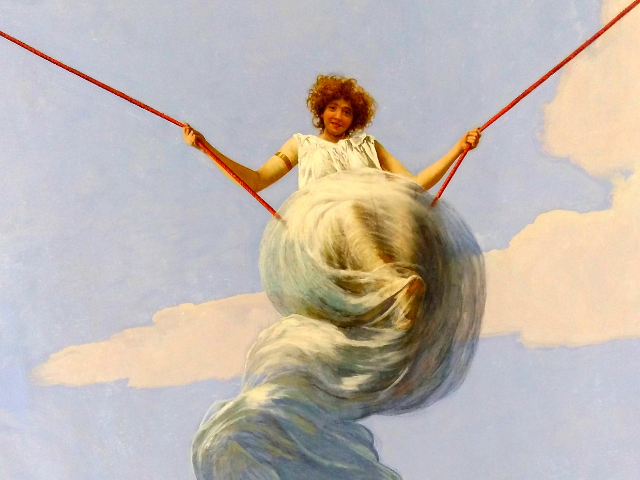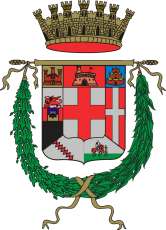
Tipologia museo
Gratuito
Servizi disponibili
Dettagli accessibilità

Descrizione
A Piazzola sul Brenta, a pochi chilometri da Padova e da Vicenza, sorge Villa Contarini – Fondazione G.E. Ghirardi, risalente al sec. XVI. Essa rappresenta uno di quei celebri esempi di dimora patrizia che hanno contribuito a creare la cosiddetta “civiltà della villa veneta”. E’ noto, infatti, che tali ambienti, edificati e pensati da architetti di grande spessore culturale (si pensi solo ad Andrea Palladio, non estraneo nemmeno all’ideazione della villa di Piazzola), inglobavano diversi piani di fruizione: furono sedi di rappresentanza, in particolare per celebrare i fasti della Repubblica Serenissima e delle famiglie nobili a lei fedeli, luoghi decorati ad arte per feste e conviti intellettuali, ma anche avamposti per il governo del territorio ai fini dello sviluppo della prima imprenditoria agricola ed industriale. La villa, ideata per la famiglia Contarini, tra le più celebri nella genealogia veneziana, corrisponde in pieno a questa tipologia architettonica. L’anno di costruzione della “reggia” di Piazzola, così definita per la grandiosità che è tale da farla annoverare fra le residenze più vaste d’Europa, non può essere fissato con un’unica data precisa a causa dei molti ampliamenti e successivi rifacimenti. Il corpo centrale fu costruito, con molta probabilità sulle fondamenta del castello dei Da Carrara, nel 1546 (come è testimoniato dalla pietra a sinistra della gradinata) su disegno del grande Palladio. Sin dall’inizio, l’edificio si presentava con due ali che vennero successivamente trasformate. Nella seconda metà del Seicento, per opera di Marco Contarini, il palazzo raggiunse quelle caratteristiche di complessità e sfarzosità architettonica che lo distinguono. All’interno del corpo centrale dell’edificio particolarmente famosa è la Sala Auditorio. Recinta a metà altezza da un curvo ballatoio, comunica al centro, per mezzo di un’apertura ottagonale, con la sovrastante Sala della Musica detta “della Chitarra Rovesciata”. L’imponente complesso architettonico è circondato da un ampio parco di tipo inglese con lago, peschiere e canali, che costituisce una rara oasi di tranquillità e di protezione avifaunistica. Raggiunto il massimo splendore intorno alla seconda metà del sec. XVII, la Villa, passata successivamente in proprietà dai Contarini ai Giovannelli e, quindi, ai Correr, venne declassata da splendida dimora di rappresentanza ad usi agricoli, sino a quando ad opera della famiglia Camerini, che la acquistò a metà dell’Ottocento, subì nuovi ampliamenti e restauri. Nel 1970, dopo un periodo di abbandono risalente agli anni che seguirono l’ultimo conflitto mondiale, la “reggia” di Piazzola, completamente restaurata, divenne centro di cultura e di scienza, sede prestigiosa in cui organizzare simposi, congressi nelle più diverse discipline scientifiche unitamente a mostre d’arte, di artigianato, concerti ed altre manifestazioni. L’intero complesso è stato acquisito nel 2005 dalla Regione del Veneto, attualmente impegnata in un’importante attività di valorizzazione di questo rilevante patrimonio culturale. Accanto alle consuete attività volte a far conoscere l’intero complesso architettonico e paesaggistico, con il ricco apparato decorativo che li caratterizza, attraverso visite guidate e attività educative, l’impegno alla valorizzazione della villa si concretizza anche nel vedere in essa non solo un museo di se stessa ma un suggestivo luogo della contemporaneità in cui allestire esposizioni d’arte di interesse regionale e nazionale.

Regione del Veneto - Villa Contarini - G.E. Ghirardi Foundation
In Piazzola sul Brenta, a few miles from Padua and Verona, stands Villa Contarini – G.E Ghirardi Foundation, dating back to the XVI century. It is one of the famous patrician abodes that contributed to the establishment of the so-called "civilization of the villa Veneta". These constructions, built and designed by architects of great cultural importance (for example, Andrea Palladio, also related to the design of Piazzola's Villa), were used for different purposes. For instance, many have been seats of power, particularly for celebrating the splendor of the Serenissima Republic and its most loyal noble families. They have also hosted celebrations and banquets among the most eminent intellectuals of the period and were used by the local government to develop early agricultural and industrial entrepreneurship. The Villa, designed for the Contarini family, among the most renowned families in the Venetian genealogy, entirely corresponds with this architectural type. The year of construction of the "Reggia" in Piazzola, so defined due to the grandeur that guaranteed her a place among Europe's most prominent residences, cannot be identified on a specific date because of the numerous improvements and renovations that occurred through the years. In all probability, the central body was built in 1546 on the foundations of the Da Carrara family's castle and was based on Palladio's design. At the very beginning, the Villa had two "wings" that were later removed. In the second half of the seventeenth century, due to Marco Contarini's work, the palace acquired the architectural complexity and richness that today make it different from any other villa. Inside the central body of the building, the Auditorium Hall is particularly famous. Fenced at half eight by a balcony, it is connected through an octagonal opening with the overhead Music Hall, also called "Della Chitarra Rovesciata". This majestic architectural complex is surrounded by a vast English-style park with a lake, fish pools, and canals, an oasis of tranquility and avifaunal protection. Once it reached its maximum splendor, in the second half of the XVII century, the Villa, which first became the property of the Giovannelli family and later passed under the ownership of the Correr, was declassified from magnificent abode used as a seat of power to a house for agricultural uses. In the half of the nineteenth century, the Camerini family bought it, and the Villa underwent other upgrades and restorations. In 1970, after a period of abandonment during the years that followed the second world war, the "Reggia" of Piazzola, entirely restored, became a cultural and science center, headquarters for the organization of symposiums, conventions on several scientific disciplines, together with art and handcraft exhibits, concerts, and other events. The entire complex was bought in 2005 by the Veneto Region, which is currently occupied with exploiting this considerable cultural heritage. Local and regional authorities organize guided tours and didactic activities to raise awareness of the entire architectural and landscape complex and its special decorative apparatus. But the commitment to the exploitation of Villa Contarini may be seen especially in the will to consider this building not only as a museum but also as an evocative, contemporary location to set up art exhibits of regional and national interest.

